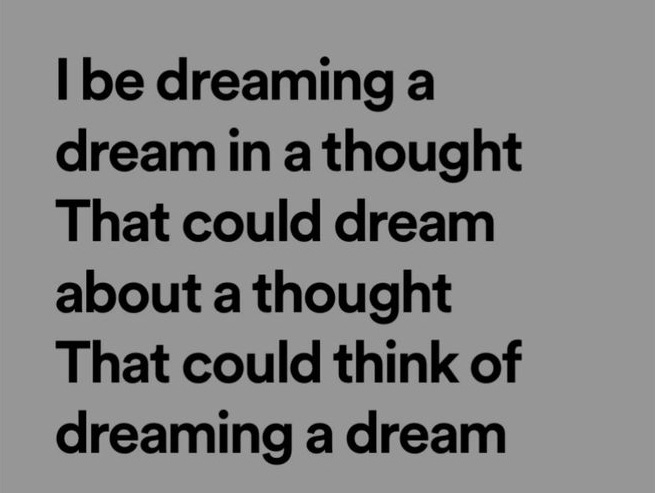Writing is like fumbling with an old key at a stubborn lock. You know there’s potential on the other side, but getting there can feel like it’s draining the life out of you. Thankfully, there are tricks that can help you make sense of what you’re doing. Here are 3 of my favourite tools.


1. Teasing the reader
Having a reader means they’re already curious about you. That’s worth a lot. But now you have a choice: you can play nice and give them everything they want right away, or you can play hard to get. We all know how it is when someone makes it difficult for us. It’s the same with writing. When you hold back just enough to make readers lean in, you’re keeping their attention. So being fully aware that they are already reading and interested should give you the confidence to tease them.
I heard a Fly buzz—when I died—
The Stillness in the Room
Was like the Stillness in the Air—
Between the Heaves of Storm—
The Eyes around—had wrung them dry—
And Breaths were gathering firm
For that last Onset—when the King
Be witnessed—in the Room—
I willed my Keepsakes—Signed away
What portion of me be
Assignable—and then it was
There interposed a Fly—
With Blue—uncertain stumbling Buzz—
Between the light—and me—
And then the Windows failed—and then
I could not see to see—
Emily Dickinson
A wonderful poem in which someone is about to die, then there’s this annoying fly, and in the end, they actually die.


Nothing really changes from beginning to end, but I still feel played with. And that’s the genius of it. Dickinson takes a moment as final as death and fills it with expectation and the unsettling intrusion of the ordinary.
The opening line immediately captures attention: “I heard a Fly buzz—when I died—”. An unexpected, almost surreal detail about their death.
The poem builds tension by painting a scene of heightened stillness, where everyone is waiting for the “King”—a metaphor for God or the arrival of death itself.
The reader is drawn in by this anticipation: what will happen when death arrives? Will they actually die?
The final line, “I could not see to see—” suggests that the speaker’s vision fails, symbolizing the end of life. But the resolution is intentionally ambiguous. Does the fly represent distraction, decay, or the intrusion of the mundane into the sacred moment of death?
2. Songwriting


Songwriters are wizards the way they make me remember their words. And it’s not just because they are being sung. It’s the magic of rhythm, repetition, and balance. And actually, a lot of writers use this trick. They repeat key phrases, build balanced structures, and use sound patterns to create a rhythm that feels almost musical.
Now, this can be done in a very obvious way. But in many cases, you might not even notice how many rhythm and flow tactics are used by writers who are not nec. songwriters.
I have a dream that one day every valley shall be exalted, every hill and mountain shall be made low, the rough places will be made plain, and the crooked places will be made straight; “and the glory of the Lord shall be revealed and all flesh shall see it together.”
This is our hope. This is the faith that I go back to the South with.
With this faith, we will be able to hew out of the mountain of despair a stone of hope. With this faith, we will be able to transform the jangling discords of our nation into a beautiful symphony of brotherhood. With this faith, we will be able to work together, to pray together, to struggle together, to go to jail together, to climb up for freedom together, knowing that we will be free one day.
Martin Luther King Jr.
Repetition to build cadence: Phrases like “With this faith” are repeated multiple times as rhythmic anchors. Each repetition introduces a new idea, reinforcing the central themes of hope, faith, and unity. Repeating phrases at the beginning of clauses creates a hypnotic cadence, making the speech feel almost musical. This technique makes the rhythm predictable but the content surprising.
Parallel structure for balance and flow: “Every valley shall be exalted, every hill and mountain shall be made low, the rough places will be made plain, and the crooked places will be made straight.” Parallel phrasing creates a steady rhythm, almost like steps in a staircase, where each clause builds on the last. The balance of structure makes the ideas easy to follow and amplifies their impact.
Rhythm through sentence length variation: Longer, flowing sentences mimic a natural rise and fall, echoing the idea of valleys and mountains being leveled. Short, declarative sentences provide moments of emphasis and rest between longer phrases, like the beat drop in a song. This variation keeps the listener from feeling overwhelmed while maintaining engagement with dynamic shifts in rhythm.
Use of alliteration and sound patterns: “Hew out of the mountain of despair a stone of hope.” The repetition of the “h” sound adds a subtle rhythm that is pleasing to the ear. Repeated sounds create a sense of cohesion and subtle musicality without being overt, making the speech flow naturally while reinforcing key ideas.
Pacing through pauses: King’s delivery included pauses after key phrases. These pauses act as rhythmic beats, giving the audience time to absorb the message.
3. The sensory checklist
Do you want them to read or feel it? If you want them to feel it, you can’t just tell them what’s happening. Think of the five senses when writing descriptions, especially when wanting to immerse the reader into a new setting.
You don’t need to include every sense in every scene, but pausing to consider how sight, sound, smell, taste, and touch might enrich a moment can push your writing into a more vivid and immersive space.
"We lived on Waverly Place, in a warm, clean, two-bedroom flat that sat above a small Chinese bakery specializing in steamed pastries and dim sum. In the early morning, when the alley was still quiet, I could smell fragrant red beans as they were cooked down to a pasty sweetness. By daybreak, our flat was heavy with the odor of fried sesame balls and sweet curried chicken crescents. From my bed, I would listen as my father got ready for work, then locked the door behind him, one-two-three clicks."
Amy Tan’s Rules of the Game
Sight: The "warm, clean, two-bedroom flat" above a "small Chinese bakery" gives a clear, grounding visual.
Smell: The aromas of "fragrant red beans," "fried sesame balls," and "sweet curried chicken crescents" evoke a rich olfactory experience.
Sound: The rhythmic "one-two-three clicks" of the locking door add auditory detail that sets the scene.
Touch: The warmth of the flat hints at tactile comfort, suggesting coziness without over-explaining.
Taste: The mention of dim sum and pastries subtly invites the reader to imagine the flavors associated with them.
Writing is as much about intention as it is about creativity. These tools can spark curiosity, build engagement, and make your writing resonate.
HOWEVER, sometimes the hardest part isn’t figuring out how to write it’s starting in the first place:






these pointers clarified my existing knowledge about this. thank you for nudging me in the right direction with this. it was much needed <3